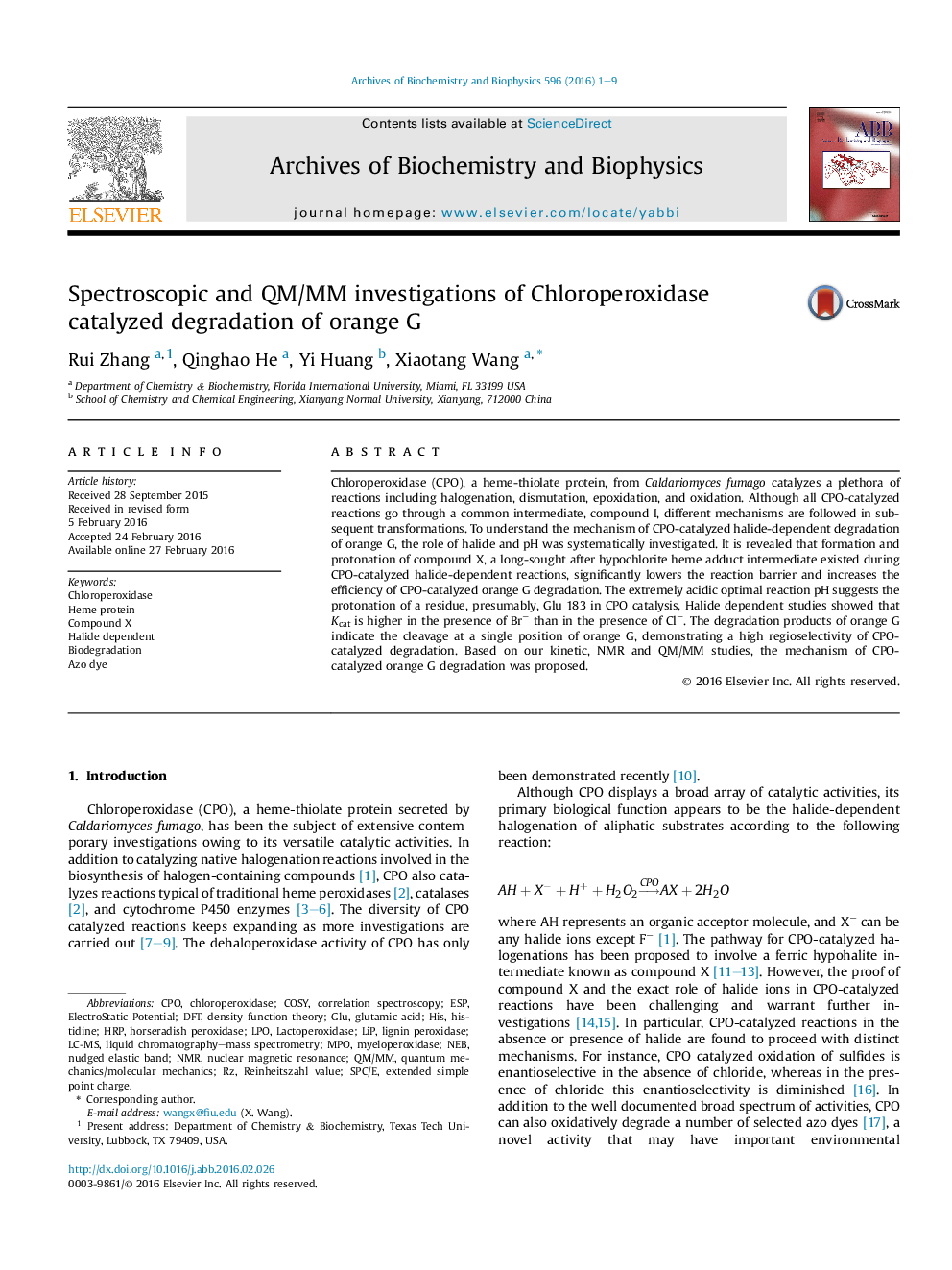| Article ID | Journal | Published Year | Pages | File Type |
|---|---|---|---|---|
| 1924767 | Archives of Biochemistry and Biophysics | 2016 | 9 Pages |
•A plausible mechanism of CPO-catalyzed halide-dependent reactions is established.•CPO-catalyzed halide-dependent degradation of orange G is highly regioselective.•Protonation of Glu 183 in CPO catalysis is critical.•Formation and protonation of compound X lowers the reaction barrier.
Chloroperoxidase (CPO), a heme-thiolate protein, from Caldariomyces fumago catalyzes a plethora of reactions including halogenation, dismutation, epoxidation, and oxidation. Although all CPO-catalyzed reactions go through a common intermediate, compound I, different mechanisms are followed in subsequent transformations. To understand the mechanism of CPO-catalyzed halide-dependent degradation of orange G, the role of halide and pH was systematically investigated. It is revealed that formation and protonation of compound X, a long-sought after hypochlorite heme adduct intermediate existed during CPO-catalyzed halide-dependent reactions, significantly lowers the reaction barrier and increases the efficiency of CPO-catalyzed orange G degradation. The extremely acidic optimal reaction pH suggests the protonation of a residue, presumably, Glu 183 in CPO catalysis. Halide dependent studies showed that Kcat is higher in the presence of Br− than in the presence of Cl−. The degradation products of orange G indicate the cleavage at a single position of orange G, demonstrating a high regioselectivity of CPO-catalyzed degradation. Based on our kinetic, NMR and QM/MM studies, the mechanism of CPO-catalyzed orange G degradation was proposed.
Graphical abstractFigure optionsDownload full-size imageDownload high-quality image (297 K)Download as PowerPoint slide
